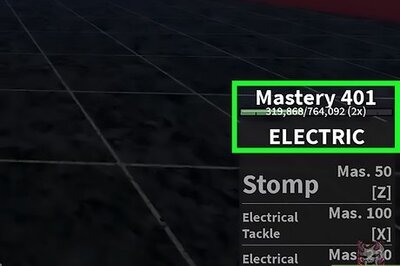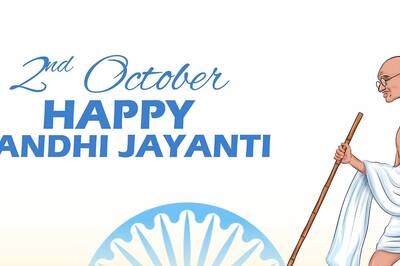
views
Note: the advice in this article is targeted at passenger vehicles. For more information concerning trucks, trailers and motorbikes/mopeds, please visit the website of the tolling agency in question.
Before You Drive
Check the tolling policy for the agency before you travel. Each authority sets the toll amounts, duration (if any), and mechanisms for collection. Systems are seldom universal across states and countries. There may also be different kinds of tolls depending on how you pay. Generally, cash and pay-by-plate tolls will be the most expensive. Tolling agencies apply discounts for those who use their toll tags. There are, however, some facts that are true of all tolls: Tolls fund the safety and service of the infrastructure they apply to, and the convenience of the electronic toll system itself. Tolls can reduce congestion by providing additional highway capacity and accelerating funding for new roads. Funding from tolls is leveraged to construct new highways and expressways, providing additional capacity and alternative, quicker routes for drivers who are willing to pay. Modern toll systems are all, in some way, electronic.
Ensure you have a toll tag or toll card ready if applicable. Many areas have switched to open road tolling because of safety and efficiency. If you do not have a toll tag or toll card, you will have to pay the toll online; note your license plate so you can log in and pay.
Keep cash on hand for tollbooths. While many areas have switched to electronic tolling, some areas still use cash. For example, 17-Mile Drive in San Francisco only accepts cash, despite the rest of the area using an electronic toll collector (ETC).
Approaching the Toll Road
Ensure you are in the correct lane well in advance of stopping. This may depend on the amount of people in your vehicle, the size of your vehicle, and the method for paying the toll.Use the ETC lane if you have a valid toll tag. The ETC lane is colored purple and names the accepted ETC tags or cards. FasTrak, E-ZPass, and TxTag are a few examples of toll tags. Note that different toll tags don't work outside of their geographic area. An E-ZPass only works in areas that accept E-ZPass, and a FasTrak only works in the State of California. If using a toll tag, ensure it's mounted to your windshield correctly. If you are unsure, use the cash lane. The cash lane also accepts toll tags, but if something does not work, a toll taker can also be able to help you with your toll tag or payment.
Prepare to stop. As you approach the toll road, there will be a tollbooth or a toll gantry. You will need to slow down if there is a tollbooth, and prepare to stop. Under some systems, you may be required to slow down, such as when the toll needs to read your license plate to recognize a transponder registered against it. However, these systems are increasingly being phased out in favour of open-road systems that don't require you to slow down. These new transponders are sometimes battery-free and so will not emit a beep. There are three types of tolling, all with different systems for charging the toll. Some toll roads will employ a hybrid system. Therefore, you must pay close attention to if and where you need to stop. These types are: Open (all vehicles stop at various locations along the highway to pay a toll) Closed (you collect a ticket and pay when exiting the highway) Open road (no toll booths, only electronic toll collection gantries upon entry and exit, or at specific points along the road)
Pay the toll. If the toll road uses zone- or distance-based fares, you may need to collect a ticket at the entrance and exit when paying with cash or credit card. This is irrelevant if you are using a toll tag or pay-by-plate tolls. If you paying tolls with cash or card, keep your receipts for record-keeping purposes.
Driving on the Toll Road
Accelerate up to highway speed. Just as driving on a highway you need to speed up, driving on a toll road you need to get up to a speed so you can merge with the traffic on the highway.
Obey all speed limits. Many toll roads have photo enforcement for speed limits, especially in Europe, and if you do not follow the speed limit you will be mailed a speeding ticket. Average speed checks and instantaneous speed checks may both be used to ensure that you do not speed. Some toll roads may have minimum and maximum speeds. Driving slower than the average speed of traffic can be just as dangerous as driving faster..
Keep right except to pass. You must use the right lane for normal driving and the left lane for passing. In left hand traffic countries, such as the UK and Australia, you should use the right lane for passing and the left lane for normal driving. Also if you are approached by a motor vehicle from behind in the left lane, you must move over to let them pass. If you see a vehicle approaching behind you and you are able to safely move over to the correct lane, you must (right in right-hand drive countries, left in left-hand drive countries). Do not attempt to enforce speed limits by obstructing traffic.
Make use of parking areas and service areas. These areas within toll zones allow you to make quick stops without exiting the toll zone. Parking areas provide a place for you to stretch your legs, sleep in your car or truck, and go to the restroom, but they may be lacking in full amenities. There might be vending machines that serve snacks, but otherwise there isn't much choice there. Service areas have shops, quick service restaurants, convenience stores, and a bit more to keep you going. They also include gas and lodging as well as other amenities for both cars and trucks.
Pay attention to variable message and other road signs. These signs will give information on road conditions ahead, including changing speed limits, construction zones, and accidents on the road. They also remind drivers of rules regarding seat belts and texting while driving.
Use the breakdown lane if there is a problem. Just as on a normal highway, the breakdown lane or shoulder on the edge of the road allows you to stop your car if there is a problem with your car.
Be prepared to stop at other toll booths or gantries. Some toll roads have toll booths and toll gantries regularly spaced along them, in which a toll must be paid on all of them.
Exiting the Toll Road
Prepare to stop. For toll roads that use zone-based or distance-based fares, you will need to present your ticket and pay the toll. This is irrelevant if you are using a toll tag or pay-by-plate tolls.
Continue driving. Once off the toll road, you will be able to continue on your journey.
After You Drive
Pay the toll if you used pay-by-plate. This has to be done within a set time period, usually one to seven days. The amount can be paid using check or credit card.
Avoid outstanding violations. If you owe tolls, then the toll agency can initiate collections, prevent your vehicle from being registered, and in some cases, order the vehicle impounded until the tolls are paid.




















Comments
0 comment